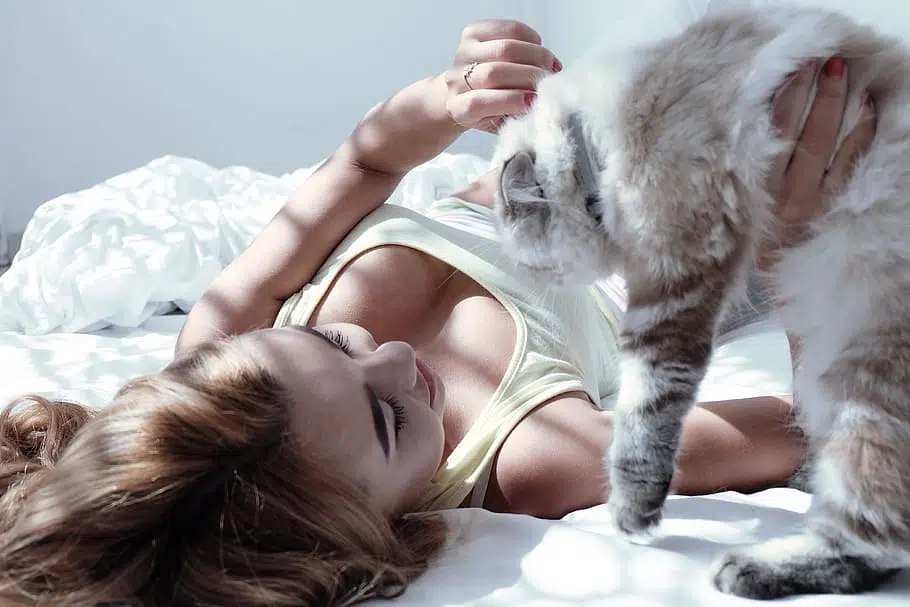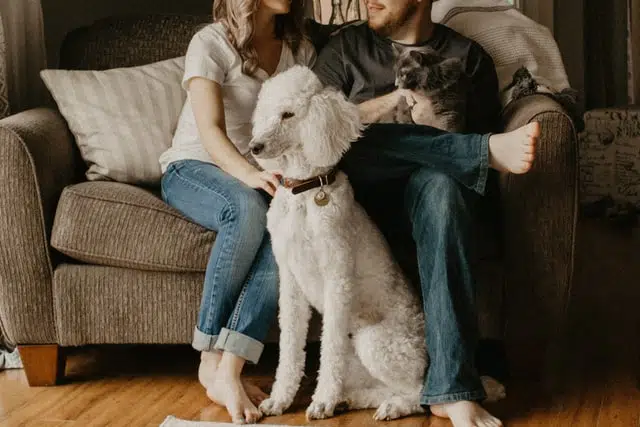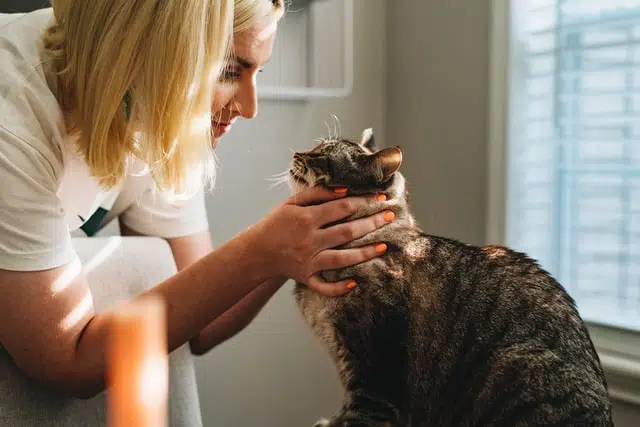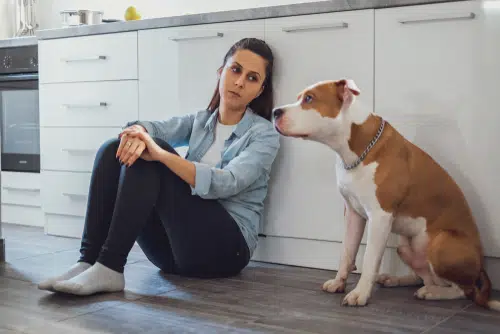Home » Blog » Pet » Pets: Understanding Them » Pets and Partners: Helping Them Get Along
Categories
Tags
animal welfare
breed profile
buying a car
buying a pet
Car
car accessories
car care
car features
car insurance
Car safety
car sales
car service
cat
cat behaviour
cat body language
Cat Breeds
cat food
cat insurance
comprehensive car insurance
Dog
Dog Behaviour
dog body language
Dog Breeds
dog food
Dog Insurance
dog training
eco friendly cars
Kitten
New Car
pet accessories
pet activities
Pet Adoption
pet breeders
pet days of the year
pet fun stuff
Pet Health
pet insurance
pet parenting
Pet Safety
pet services
Puppy
rescue pets
road safety
road trip
safe driving
Recent Blog:
Facebook Posts
1 day ago
Are intestinal worms setting up camp in your dog’s gut without paying rent? Here’s how to spot the main culprits and get rid of them too:![]()
![]() Preventing, Identifying and Treating Intestinal Worms in Dogs - bit.ly/43YjCKu
... See MoreSee Less
Preventing, Identifying and Treating Intestinal Worms in Dogs - bit.ly/43YjCKu
... See MoreSee Less
Preventing, Identifying and Treating Intestinal Worms in Dogs
www.pd.com.au
Intestinal worms, such as roundworms in dogs are one of the least glamorous topics on the planet. These intestinal parasites that basically use our dogs
PD Insurance
with Dogs West.
3 days ago
We enjoyed meeting #breeders #doglovers and members at the Dogs West Open Day. Special thanks to our partner Dogs West for organising an incredible event. There is still time to enter our pawsome competition. Click here for details: bit.ly/4covyce![]() #PDinsurance #dogswestopenday #dogswest
... See MoreSee Less
#PDinsurance #dogswestopenday #dogswest
... See MoreSee Less
3 days ago
Did you know? The Manx is a breed that is known for its lack of a tail, which is caused by a genetic mutation.
... See MoreSee Less
Surely pets and partners are meant to get along as natural born allies? Right? Erm…not always. Sometimes your cat or dog turns out to have a pet peeve: your partner!
Yet both your pet and partner have a firm place in your life. This means that until they forge a peaceful union both relationships will be tested. This puts you between a rock and a hard place (albeit furry).
But not to fret. In this article, we aim to unpack what might be causing the friction and steps you can take to make a softer landing.
Because as the mitigator, you’re in a good position.
The stats
First off, you might very well have the key to the solution. In fact, you might be the solution. Here’s why…
According to a survey of 2000 pet owners, one third of people love their pet more than their partner. If forced to choose between the two, 14% say they’d even choose their pet over their partner.
If this sounds like you (we’re not here to judge, seriously), consider that your pet has probably noticed the kink in the love triangle. Our pets tend to have a keen sense of our emotional state and may even react against the ‘third wheel’ in our defence.
Then again, there are some simpler reasons which could be the cause…

Why doesn’t my pet doesn’t like my partner?
Firstly, it may not be true that your pet doesn’t like your partner. Bella or Charlie may just be reacting negatively towards your significant other without any underlying negative sentiment.
We know this sounds strange and even maybe contradictory. But in truth, our pets rationalise situations differently to the way we do. While it’s easy to assign our human emotions to our pets, their motives may be different to ours.
Looking at what’s driving our pet’s behaviour can hold clues as to what to do. You never know, with a few basic adjustments, you could become an instantly happy family.
Here are some possibilities:
1. Your pet is guarding you
Your pet sees you as theirs, and as their pet parent, this is of course true. However, they may instinctively be guarding you – even from your partner.
Note that some breeds are more inclined toward guarding those they see as family, while others are more curious about newcomers and even strangers.
The German Shepherd, for instance, tends to fiercely guard those they view as family. While the Labrador Retriever generally likes most everyone.
Try swapping up pet care with your partner. Let them take over the feeding and grooming duties. This will help your pet and partner to build trust and bond.
2. Your pet is guarding their territory
One of the great skills dogs especially have is territorial guarding. Until this extended to your significant other, you probably enjoyed it. But now that your love triangle is turning into a Bermuda triangle, it’s less than ideal. This is more likely to be the case if your pet and partner tend to encounter each other mostly at your house.
Swap up the location you spend time together in – all three of you. Perhaps you don’t leave your pet at home when you head over to your partner’s place. If you bring them along, they can experience the relationship in a new territory.
Or head to the beach or park on as many expeditions together as possible. Let your home become less of the mainstay in the mix, at least until meow or woof warm to the idea of another pet parent.
3. Pet parenting style
Does your partner have a contrasting parenting style to yours? If so, your pet may not know how to read their behaviour at first. This can take time, and hopefully, your pet will start to warm up after a stint of being standoffish.
You and your partner can discuss what these differences in style are. And perhaps they can match yours to help ease your pet into the swing of things.
4. Pet separation anxiety
You’re the apple of your pet’s eye and their route to happiness and fulfilment. So now you and your partner have started to spend more time together, your pet may be feeling anxious or neglected.
If you notice you’re lavishing your partner with more attention and your pet with less, try to reassure your pet. Even better, you and your partner can both lavish attention on your pet. This way the bond between partner and pet can blossom and grow.
Find out more about separation anxiety in pets.
5. Marred by past experiences
Your pet may have had a traumatic experience in the past with someone who reminds them of your partner. This doesn’t mean your pet dislikes your partner. It means they’re associating them with a memory that triggers feelings of danger, fear or pain.
This could be something as simple as the way your partner walks, moves or even an item of their clothing, like for example a hat.
If your pet is a rescue animal with a history, this is especially likely. You can help your pet by paying close attention to what the associative quality is. When you notice them acting fearful, defensive, or anxious, try comforting them with petting and kind words.
It may take some time to overcome this hurdle, but you can help overcome it through repeated assurance. If you decide that things are going too slowly, consider a pet behaviourist to help fast track the process.

Helping my pet like my partner
If things stay the same between pet and partner it can put pressure on both your relationships. But trying to pressurise or force the relationship to work out can also do more harm than good.
Think of the relationship between your cat/bird/water dragon/dog etc. and your partner like a brothy soup. The stove needs to be warm, but not too hot and the soup needs time to simmer. Turning the temperature up high all of a sudden might cook the ingredients sooner.
But you won’t get the same fragrant notes. And you might even burn it. In other words, there may be lots of small caring things you can try before deciding on corrective action.
Here are some slow simmering tips to warm up the relationship:
1. Slow introductions
The start of any new relationship can be overwhelming. You and your pet needed time to get to know each other too. As did you and your partner. So maybe the ‘pets and partners’ piece needs a strategic approach to taking it easy.
Take your pet out for short walks with your partner, then gradually increase them over time. Same goes for at-home visits. This gives pup or mittens a chance to acclimatise.
Pets need similarly slow introductions with each other too. Find out more about introducing a puppy to a cat or introducing your kitten and cat for the first time.
You’ll notice a big element in successful companionship between pets is bonding through smell first. Maybe try that out with your partner and your pet too. Like this…

2. Cuddly clothes
Keep an item of your partner’s clothing at home near your pet, something they’ve worn and has their smell on it. Don’t be tempted to keep it to yourself and wear it in bed. The point of this exercise is for pet, not you. Keep your partner’s shirt/hat etc. where your pet sleeps or rests.
3. Aloof partner
Ask your partner to keep a distance, not from you, but from your pet. And only at first. This may sound cold, but it could be what your pet wants. Ask your partner not to talk to, pat or touch your pet. Behaving this way maintains your pets’ sense of privacy and gives them the chance to choose when they’d like to approach your partner instead of the other way around.
4. Fire escape
Make sure your pet has plenty of space around your partner and never feels confined in a corner or trapped in a room. Check they always have an exit point and can easily leave the room is they want to. Keep doors open and have your partner sit away from the doorways.
5. Treats never hurt
The way to a pet’s heart is through their stomach. So, in addition to letting your partner do your pet’s feeding, let them do the treats too. Just don’t overdo the treats, lest this lead to pet obesity which can, in turn, cause diabetes in dogs and cats.

Ask an animal behaviourist
If the atmosphere is on tenterhooks, you may want to get professional help, like an animal behaviourist. In no way is this defeat, it helps your pet get to a happy safe space quicker which is good.
And if your pet is behaving aggressively toward your partner or their relationship seems to be going from bad to worse, then why not.
Times like these can be trying, so we’ve also compiled a few articles to help understand your pet’s behaviour:
Peace of mind with pets and partners
We hope these tips help your pet and partner make peace. And while we’re on the topic of peace, there’s another type worth a mention: peace of mind.
With our online pet insurance, you can give your pet a soft landing any time they need it. Not only will you get emotional peace of mind, you’ll also get financial peace of mind. Our pet plans are designed to give you valuable benefits at a fantastic price and reduce your out-of-pocket costs.
Share On:




